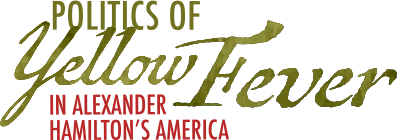Description: When yellow fever hit Philadelphia in 1793, experts were divided as to where the deadly disease might have come from and how, or even why, it spread. Students consider how politicians, doctors, laypeople, and Philadelphia’s marginalized residents responded to the epidemic in the face of so much uncertainty.
This module has three classes in which students explore the dynamic relationship between medicine, politics, and race in the Early Republic. Students also investigate how competing understandings of yellow fever circulated among Philadelphia residents and how those theories both reflected and informed social or political thought. Each 50 to 90-minute class includes a short introduction, closely aligned primary and secondary sources, and discussion questions. Information about the author of the module, suggested uses, and academic objectives is available online at the About the Module.
Class 1: Explaining Yellow Fever – Localism v. Contagionism
The first class introduces the multiple ways that Americans understood the origin and transmission of diseases in the late 18th century. Students compare competing explanatory models of yellow fever that circulated in 1793 Philadelphia, investigate how medical knowledge circulated among professionals and the public, and examine how these models shaped the city’s response to the epidemic.
Class 2: Politics and Medicine Collide During the Yellow Fever Epidemic
The second class focuses on the developing partisan political environment that saturated the new nation’s capital city. Students consider to what degree yellow fever instigated political discord or, instead, informed already existing partisan divides. The primary sources in this class introduce the political ideologies and party identities emerging in the Early Republic.
Class 3: Race, Class, and Citizenship During Yellow Fever Response
This module closes with a class focused on how two of Philadelphia’s leading African American residents, the Reverends Absalom Jones and Richard Allen, managed hundreds of African American volunteers involved in responding to the epidemic. Students analyze how race and class intersected during and after the epidemic.






